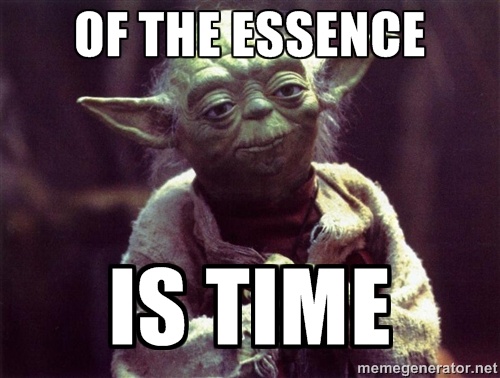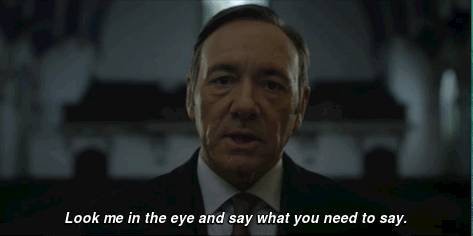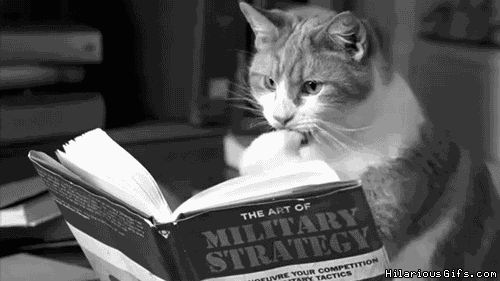A.k.a. The Do’s and Don’t’s of Music Marketing.
In the 2003 romantic comedy, How to Lose a Guy in Ten Days, Kate Hudson plays a columnist who decides to write a dating “how-to” in reverse. In the movie, Hudson keeps a diary of her experiences as she purposefully drives Matthew McConaughey’s character away within ten days of dating him. I have been keeping a similar “diary”. Except instead of dating, my diary is about marketing. I promise, it’s just as exciting.
With the abundance of content on the Internet, it’s pretty difficult to get your product to stand out. Think about how many products, artists, and events you see being promoted on your Facebook news feed everyday. Do you even open half of the emails in your personal inbox? I know that I don’t. It is just way too easy for people to close out of your page or skip right over your advertisement and move on to the next product.
So how can you ensure that they don’t?
Time is of the Essence
Or alternatively…

First of all, it’s important to realize that people are busy. And even those who are not busy… well, they still think that they are. So the entire marketing process is basically a strategic plan to convince strangers to use their precious time to learn about your product. You have to convince them quickly that your product is worth their time.
“Desktop email subjects typically won’t extend past 50 characters and that number drops to 30 for mobile…”
In order to grab their attention, it’s very important to keep email subjects, as well as titles and slogans, short and sweet. And most importantly, catchy. If your email subject or the title of your event is not interesting, many potential consumers may not even get to reading the main content. Make them want to open your email or click on your link.
Email subject character limits may be shorter than you think: desktop email subjects typically won’t extend past 50 characters and that number drops to 30 for mobile.
With mobile traffic steadily increasing, get in the habit of writing short subject lines.
This sentence is forty-four characters long
ng.
Crazy short, right?
***Click here for a free music marketing email template!***
The Head and the Heart
(not the band, although we do love them).
The way I see it, you always have two great options in marketing. Go for the gut or go for the heart. If you can make your audience laugh or get to their soft spot right off the bat, they are much more likely to read on. Also, everyone hates (and secretly loves) a cliffhanger. So lead them on, tease them a little bit. They’ll stick with you.
Say What You Need to Say

Saying just enough, without saying too much or too little, has always been a common struggle in life. But if you can master this challenge in marketing, you’ll be golden.
Break it down.
Shorter paragraphs are easier to read.
Don’t overwhelm people with your humongous paragraphs of information.
They won’t read it.
Wasn’t that easier to get through? If you can separate your content into a bunch of smaller sections, people will be much more likely to read it all. This is an effective approach in email marketing, on social media, and in just about any marketing setting you can think of.
Simultaneously, if you can find a way to be succinctly thorough and answer any questions the consumer may have before they have the chance to ask, you will save everyone a whole lot of time. This is especially helpful in sending out emails, as I have learned firsthand from my endeavors in booking artists and bands, and is also a critical component of a successful inbound music marketing strategy.
Plan Ahead

As the expression goes, “Timing is everything”. This applies very much to the art of marketing. It’s important to think about your target demographic and what their daily life might look like. If you know that the majority of your potential fans or consumers work during the week, be mindful of this. For those who work from nine to five Monday through Friday, opening emails is probably one of the first things they do on these mornings — so why not make yours the first one they see?
If you are trying to advertise an event, for example, it will probably be much more effective to send out your email on Tuesday morning at 10:00 am, rather than Friday night at 11:00 pm. Your target audience is most likely not sitting around checking their emails on a Friday night.
This goes for social media, too. If you’re releasing new music or playing a show that you want people to know about, don’t tweet about it at 3 am. No one is going to look at it.
That being said, always use data to back up your assumptions. Most marketing tools have built-in analytics. Use them to shape your strategy.
Helpful Tools
I have two pretty awesome websites to share with you. MailChimp and HootSuite are both very cool, and they are going to make your life so easy. MailChimp provides ready made templates that allow you to create and design eye-catching email campaigns. My favorite features are the scheduling and automation features. Scheduling allows you to draft your email at your convenience and then pick a date and time that you would like it to be automatically sent out to your mailing list, and automation allows you to send automatic emails to new subscribers that curate them through your sales funnel.
HootSuite is sort of like MailChimp for social media. It allows you to schedule tweets or Facebook posts well in advance. I often hear people, specifically artists and bands, complaining about their inability to maintain their social media profiles. Understandably, we all lead busy lives and are not necessarily able to sit around and tweet at prime social media hours. HootSuite solves this problem.
You can plan out your tweets and Facebook posts in the middle of the night if you want, and then schedule them to show up throughout the day during your busy work week.
I’m Almost Done, I Swear.
There’s nothing short and sweet about this blog post. But I’m not trying to sell you on anything, so read on if you please.
A couple more tips:
- If you are including photos in the content of your emails or other online documents, always link them. Linking your photos to additional content that you would like fans to see, such as a website or a free download, for example, is always a good idea. People click on photos more than you think. Never pass up a possible opportunity to expose more of your content to as many people as possible! Also, always try and segment to better fit your emails to your audience. See this blog for a rundown on segmentation.
- Know and target your demographic, but don’t purposely exclude potential consumers for no logical reason. This can kill your whole campaign. For example, if the majority of your fans are women and your goal to market to more men, that’s great. But don’t leave the ladies out! Strategically targeting specific demographics is smart, but you also want to leave the door open for unexpected fans. See this blog for advice on how to shape your music marketing strategy around your audience.
Bon Voyage
Having a good quality product, whether it be music or anything else, is the first step to achieving success. And I’m sure that you and all of your products are awesome — so take the next step and market the crap out of whatever it is you are trying to sell! I wish you luck.
{{cta(‘304e19c5-436b-40e4-9033-4668e6f6c39d’)}}
